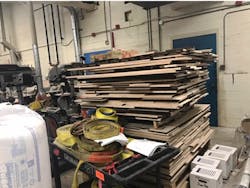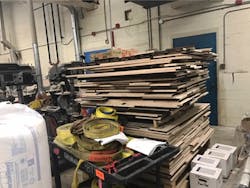Construction projects call for many decisions to be made during and prior to the job’s completion. For instance, simple decisions must be made in response to questions like:
- When and where should the material be delivered?
- Do we need a few more people on-site next week to help install luminaires, or can our current crew handle the work?
These types of decisions are made every day. While some may seem small and insignificant, when you add them up, they can determine a positive or negative outcome of your project — and the relationship your company has with its customers.
Is it clear which person in your organization is responsible for different project-related activities? Which decisions are made by electricians, and which are left to the responsibility of project managers, project admins, or other office personnel?
Helping your foremen and electricians develop leadership and decision-making skills is a great idea. The problem is that electrical contractors often blindly rely on the decisions made by foremen and electricians as the onlyfail-safe without being aware of the issues at hand.When concerns arise on-site, which they do more often than managers are made aware of, field leaders and employees should be given clear expectations of which decisions they can make and which ones need to be escalated to their project manager or upper-level management team.
Job sites are chaotic, and workers in the field deal with new situations every day. Between different project teams, foremen, general contractors, and jobs, the way specific situations are handled can vary to a great extent.
Dr. Heather Moore, MCA’s vice president of operations, wrote her 2013 doctoral thesis on "Exploring Information Generation and Propagation from the Point of Installation on Construction Jobsites." Her research reveals the full extent of how many issues come up in the field on a daily basis as well as the different ways these issues are dealt with when they arise (see Photo 1 and Photo 2). Moore’s thesis, derived from years of observation on construction job sites, showed that 89% of the tasks that skilled trades schedule to complete encounter unanticipated obstacles at the time of execution. These obstacles experienced in the field are reported only 50% of the time. The remaining 50% get resolved directly and implicitly on-site. The study further shows that in handling those obstacles, workers in the field:
- Wait for help 40% of the time.
- Resolve the obstacle to the best of their knowledge and ability in 36% of the cases.
- Avoid the problem by using workarounds for 24% of the obstacles.
These statistics make it clear that field personnel deal with numerous obstacles on-site. Furthermore, these obstacles are often invisible to management.
The outcome of any construction project is the result of how situations and obstacles are resolved and how decisions are made ― before, during, and after the life of the job. Any variation in who, where, when, and how project-related decisions are made can — and will — result in variation in the job’s safety, productivity, profitability, and overall outcome.
To understand the job-related issues that your field crews are dealing with, you must first understand the current state of information flow and decision-making behavior in your company. Our upcoming job-site intelligence article will discuss findings from our 2020 research on industrialization in construction — specifically, how contractors can uncover the hidden decision-making paradigms in their company.
Dr. Perry Daneshgari is president and CEO of MCA, Inc., Grand Blanc, Mich. He can be reached at [email protected]. Sydney Parvin is assistant data analyst at MCA, Inc., Grand Blanc, Mich. She can be reached at [email protected].
About the Author
Sydney Parvin
Sydney Parvin is associate data analyst at MCA, Inc., Grand Blanc, Mich. She can be reached at [email protected].


